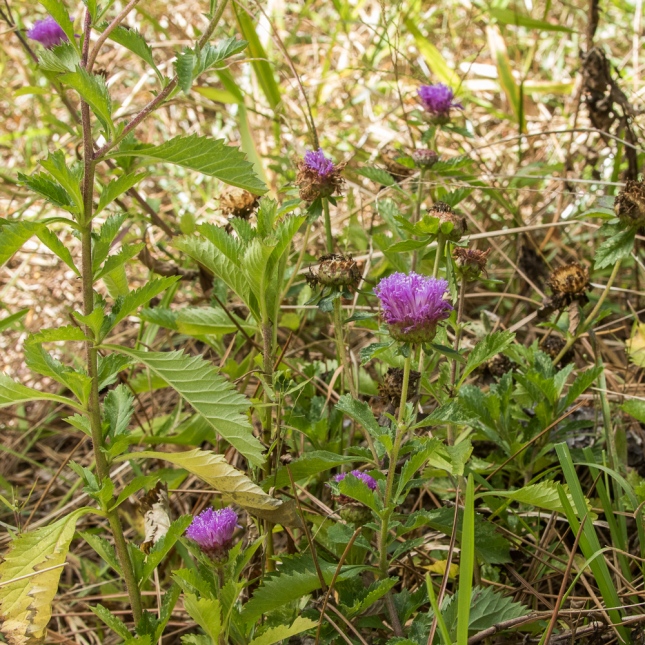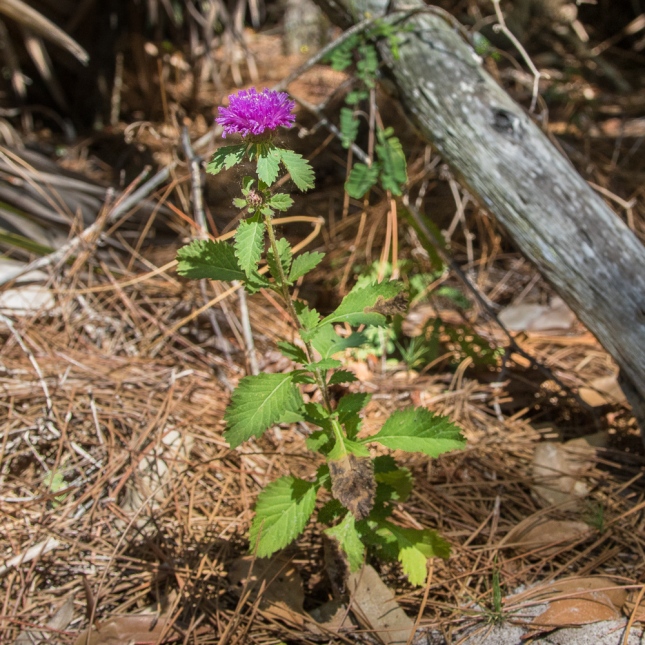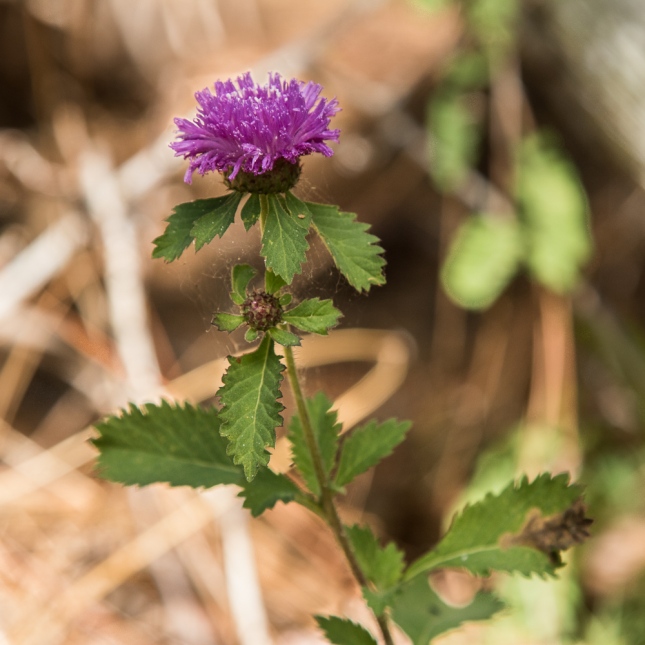Centratherum punctatum
(Centatherum possibly comes from Latin for “central prickle,” referring it seems to the flower head of a related species. Authors differ on interpreting this name. Punctatum means spotted, referring to the foliage.)
Asteraceae, The Aster Family
In Halpatioke Park, where John and I traipsed today, is a secret meadow sporting luscious regal purple wild flowers proud in the dappled sun. The meadow looks more like a garden than a woodland. It is a rogue garden.

Today’s photos by John Bradford.
We are accustomed to non-native plants. Of the roughly 4000 species growing wild in Florida, well over 1000 are visitors. It is not just melaleuca and Brazilian Pepper. This blog is not a soap box, so ranting shall be not. Suffice it to say that it jolts even the long-standing jaundiced eye to see garden flowers intruding in the woods. Just ain’t right! And I say that ruefully as director of a college horticulture program. Yes, we have skeletons in the potting shed. That’s for a different blog.
We’ve got the uninvited purple posies so we might as well own them. And, even if in the wrong place, at least pretty. So say hello to Lark Daisy, a side-steppin’ garden flower distributed from South America to Africa, Hawaii, and Australia.

The fragrant leaves inspired the commercial cultivar name ‘Pineapple Sangria’ familiar to some gardeners. As with many tropical weeds creeping northward in Florida, I’ll bet it likes Global Warming.
Anybody who has looked up a lot of plants over decades knows that every species on earth has a history of medical uses against something. What’s more interesting is when a species enters modern medical literature with research-based applications against specific ailments. Even then, however, you have to wonder if our modern plant-drug enthusiasms still often overlie old fashioned wishful thinking. In 1818 they wishfully favored plants for treating the ailments of the day: childbirth problems, dropsy, hemorrhoids, respiratory ailments, skin lesions, and wounds.
In 2018 we like plants with emerging potential against cancers, HIV, inflammation, and malaria. Modern times! More specific, more scientific, yet still often across the Grand Canyon from efficacy. But not always, just as traditional plant uses sometimes worked.*

Lark Daisy has invaded pharmacology. Almost 60 compounds enhance its fragrant leaf oil. Its extracts kill the malarial parasite handily, but oh rats, the stronger the detriment to the parasite, the more toxic the drugs are to human cells. Lark Daisy drugs inhibit reverse transcriptase, the Achilles heel enzyme of the HIV virus. You guessed it—again, the good antiviral compounds kill people cells. But look on the bright side, killing human cells selectively has interest against cancer, and our plant inhibits proliferation of certain lab cancer cell cultures, not that that is rare in plant drug screenings.
If you’d like something more unusual and hi-tech, consider this: how about Lark Daisy chemical derivatives on silver nanoparticles to suppress inflammation. Over my head, and an investment opportunity!
For all of these potentialities, of course the hard part is the step from the test tube to safe effective clinical applications. Don’t hold your breath.
————————————————————————————